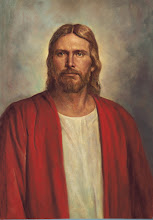A major concern that faced the new First Presidency grew out of the Church's policy on priesthood. The Stanford action was only one manifestation of the problems it created. There were others. On February 5, 1970, there was a near riot at a basketball game in Fort Collins, Colorado, between Brigham Young University and Colorado State University. It was triggered by a group of militant black students from CSU who used this means of protesting the Mormon Church's policy on priesthood. These militants were permitted to offer an invocation before the game, which was little more than a broad indictment of the Church. There also was an overt show of protest during the warm-ups when a group of blacks massed beneath the BYU basket, shouting threats at the players. At halftime vulgar insults were made against the BYU Cougarettes and the players, eggs were thrown onto the playing floor, and an iron object and a lighted torch were thrown toward the floor. Finally, fights broke out in the arena. Order was restored only when the city police were called in.
A few days after this incident in Fort Collins, a militant activist named Jerry Rubin, who was then under indictment for rioting in Chicago, spoke on the campus of the University of Utah in Salt Lake City. During his incendiary remarks, the speaker bitterly berated the Latter-day Saints, warning, "We will either integrate the Mormon Church, or we will destroy it." These incidents were symptomatic of broad-based attacks being made on the Church around the country by its enemies and detractors. Adding to the turmoil this created was the upheaval caused by America's involvement in the Vietnam War. At the time, a member of the Church, a Vietnam War veteran, had been speaking in Church meetings, "arousing people to fever pitch," according to President Lee, "with scare stories about impending doom."
(Francis M. Gibbons, Harold B. Lee: Man of Vision, Prophet of God [Salt Lake City: Deseret Book Co., 1993], 423 - 424.)
Subscribe to:
Post Comments (Atom)


No comments:
Post a Comment